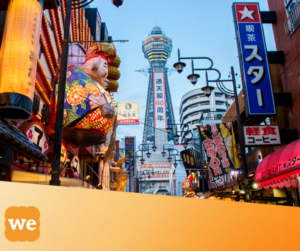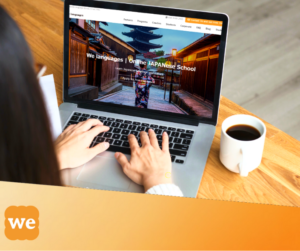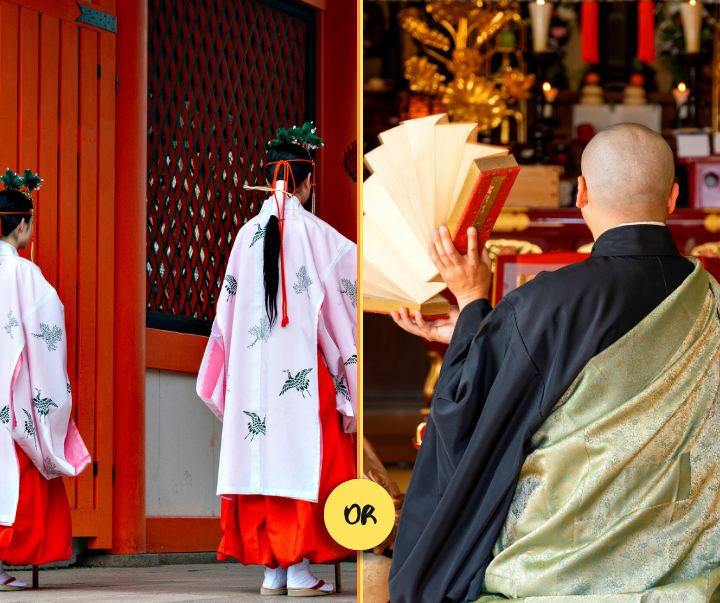
Shinto and Buddhism are the two most eminent faiths in Japan. But is one of the two religions more popular than the other among Japanese people?
Which religion is the oldest in Japan? Apart from all the differences between Shinto and Buddhism religion, they coexist in Japan peacefully.
Read on to discover the origin of each faith and its importance to the population of Japan.
The history of Shinto and Buddhism in Japan
Having continued for more than 1,500 years, the Japanese imperial family is the world’s oldest hereditary monarchy and is said to be descended from the Goddess of the sun.
Japanese people have worshiped nature by practicing Shinto since ancient times. Thereafter in 538 Buddhism was introduced from the Korean Peninsula.
Dragging the imperial court into the fray, two powerful clans fought over its introduction: the Soga and Mononobe clans. The Soga clan was keen to adopt this new culture and the Mononobe clan wished to protect the traditional Japanese gods.
Behind the scenes, the three kingdoms of Baekje, Silla, and Goguryeo on the Korean Peninsula were fighting against each other for dominance of the peninsula.
Through Buddhism, Baekje expected to ally itself with Japan, while Japan intended to adopt its advanced culture.
By joining forces with Prince Shotoku – who was later credited with outlining the blueprint for present-day Japan – the Soga clan won the battle and Buddhism was introduced into Japan.
In addition to those in Nara – including Horyuji, the world’s oldest wooden temple, and the largest wooden temple, Todaiji – many temples were built all over Japan, and Buddhism spread.
How do these two religions coexist in Japan?
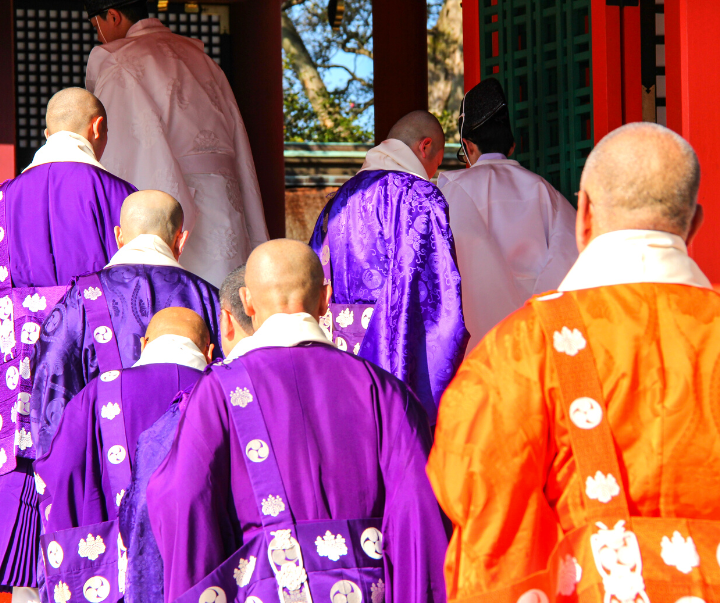
Despite the spread of Buddhism, it did not bring an end to the traditional Shinto religion. Rather a unique religious practice rose, in which two religions coexisted and took root with the Japanese.
After that, Buddhism divided into numerous sects, which became so influential that they were sometimes used by those in power, or had gained enough power to oppose the authorities.
In the 17th century, in order to rid itself of the influence of Christianity, the Edo shogunate enforced a Buddhist policy of forcing its citizens to belong to a temple.
It was established in this era that funerals were carried out in the Buddhist style, and that the corpse was buried in the cemetery of the temple to which that person belonged. This is because there is the concept of the afterlife (Gokurakujoudo/ paradise) exists in Buddhism.
It was the strength of support for the Emperor that brought about the end of the Edo period, which lasted for about 260 years.
The newly created Meiji administration made political use of the Shinto religion by positioning
it at the heart of the state. The Showa era saw the rise of militarism and Yasukuni Shrine became a special Shinto shrine to commemorate those who died in the war. Later visits to this shrine by politicians became a controversial political issue.
In this way, those in power at the time made clever use of Shintoism and Buddhism.
Shinto has no clear doctrine except the deification of nature, worshiping mysterious mountains, waterfalls, rocks, and even animals, as well as great human beings as gods.
Buddhism teaches people how to live by understanding and dealing with the truth that everything is subject to constant change. Additionally, things have no true state but are inherently subject to decay, so consequently it’s hard to control our destiny.
Are Japanese people religious?
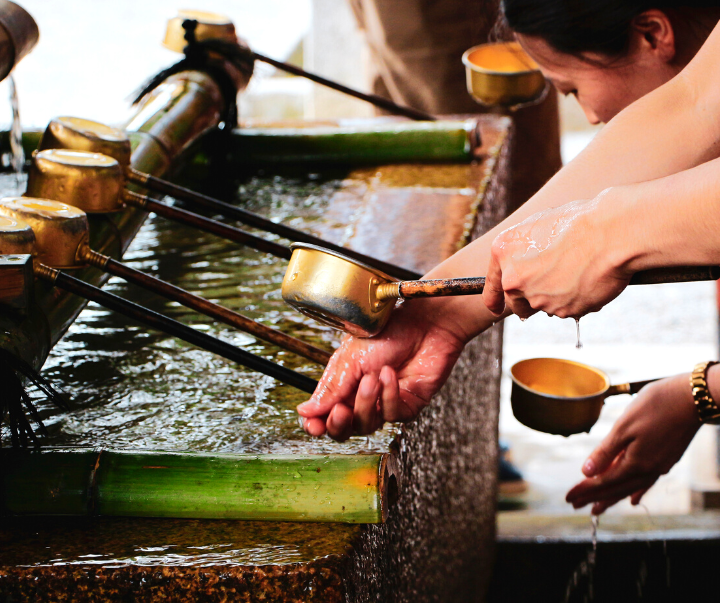
It is said that 80% of Japanese visit a shrine or a temple during the New Year in Japan. Do you perform religious rituals during the New Year season? However, few Japanese know that April 8 is Buddha’s birthday.
On the other hand, the Japanese celebrate Christian events, which have not had much influence on Japan. The underlying cause of this is that an interest in adopting and accepting new things is in the Japanese nature.
Many contemporary Japanese seem to feel that Buddhism is old-fashioned, while Christianity is rather fancy. Although many gods coexist in Japan, few Japanese visit sacred structures for religious purposes – this includes New Year visits.
The majority of Japanese are not very pious; for them, religious events are merely events, and they even regard them as a bit of fun.
Simply put, you might say that the Japanese live in a blessed society in which religious aid is not much needed.
Love what you are reading?
If you are invested in the Japanese culture, why not study the Japanese language with native teachers? Learn Japanese with We Languages, and ace your lessons based on your needs by becoming confident in listening and talking. We offer tailored private and group Japanese courses fit for every level.
We present to you our newest JAPANese course in collaboration with our partner Hiragana Times magazine. Let’s talk Japanese together through culture.
Why wait? Have the full package of the Japanese language knowledge with We.
Learn Japanese as it relates to you with We (JapaNEEDS)! Get a free course consultation now:↓

